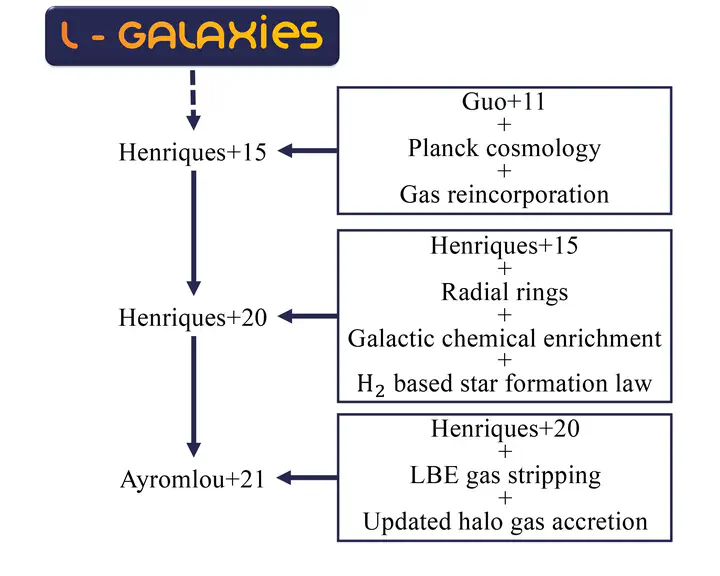Debugging Galaxy Evolution with L-GALAXIES
 Flowchart describing the three LGalaxies models, Vani+25
Flowchart describing the three LGalaxies models, Vani+25
The formation and evolution of galaxies are among the most complex challenges in astrophysics. Recent advancements with instruments like the James Webb Space Telescope (JWST) and the Atacama Large Millimeter/submillimeter Array (ALMA) have shed light on high-redshift galaxies—those that existed billions of years ago. However, most theoretical models, such as the Munich semi-analytical model, also known as L-GALAXIES, are tuned to match galaxies in the local universe and have not been rigorously tested against these early galaxies. Researchers from the Max Planck Institute for Astrophysics and the University of Bonn comprehensively evaluated the L-GALAXIES model using the latest observations and found that while the model aligns well with the properties of local galaxies, it struggles with key aspects of high-redshift galaxies. Particularly, the study highlights critical issues with the model’s predictions of quenched galaxies, those that have ceased star formation, including their number density, size and compactness in the early universe, suggesting a need to revise the implementation of processes driving star formation quenching, including supermassive black hole feedback and galaxy mergers. The findings from this research were subsequently published in MNRAS (DOI).